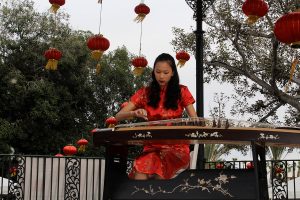Los Angeles Lantern Festival celebrates the crossroads of Chinese American culture
The Los Angeles Lantern Festival marks one of the few of the last Chinese New Year festivities of the year. To the Chinese, the festival represents the end of annual celebrations and signifies that it is time to get back to work.
This year, guests of the 16th annual Los Angeles Lantern Festival were lucky to not feel a single rain drop. Located next to the Chinese American Museum, conveniently close to Union Station, the lantern festival brought crowds of citizens to take part in fostering cultural conversation.
Unlike many commercial urban celebrations, the festival focuses on its cultural mission to educate and strengthen the Chinese American community. It is a celebration for everyone — from families with children to millennials and adults, ready to engage in a deeper perception of America’s diverse cultural plate.
The festival is free, with entertainment performances that showcase the Chinese cultural legacy. Kids and adults were involved in lantern-making and Chinese calligraphy; the activities were easy to follow and engaging.
Examples of possible visitor creations from craft stations, red Chinese lanterns embellished the spaces around the festival’s main locations. As symbols of a prosperous lifestyle, these lanterns fostered community building and cultural education through a live experience.
Other hands-on activities and workshops were offered for free, with attendees involved in tigger puppet making, page coloring and face painting. These interactive forms of learning created platforms for cultural communication between young and old Chinese Americans.
Live entertainment shows took place at an open air gazebo in the El Pueblo de Los Angeles Historical Monument, with sing-and-dance groups and magic shows. This year, young Chinese American talent from Poprock Academy seemed confident on stage, performing popular American songs for a curious crowd.
Skilled tricks from a variety of magicians were accompanied by Chinese music, bolstering the festive mood. The interactive performances encouraged observers to join the entertainers on stage.
Many visitors flocked to the museum to try Chinese meals from food trucks located at the venue. Phantom Food Truck, Steamy Bun Truck, Tainamite Truck and Lobsta Truck were a few present; their food offered a fusion of Chinese and American culinary experiences.
Representing the diversity of Los Angeles, the Lantern Festival allows the Chinese American Museum to advance in its mission of sharing its historical traditions. Though the event marked the end of Chinese New Year celebrations, it created a never-ending exchange of traditions for guests of all ages.

